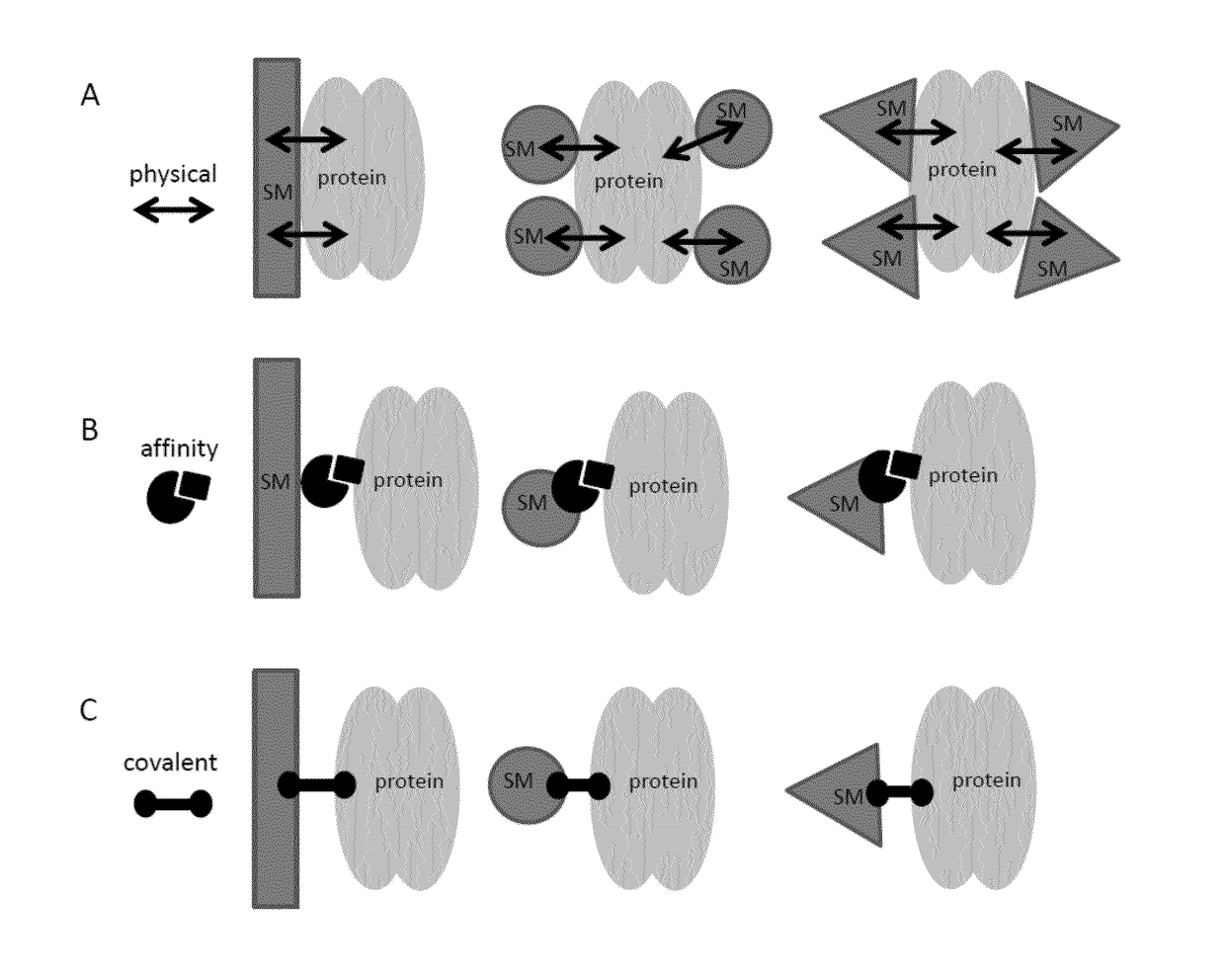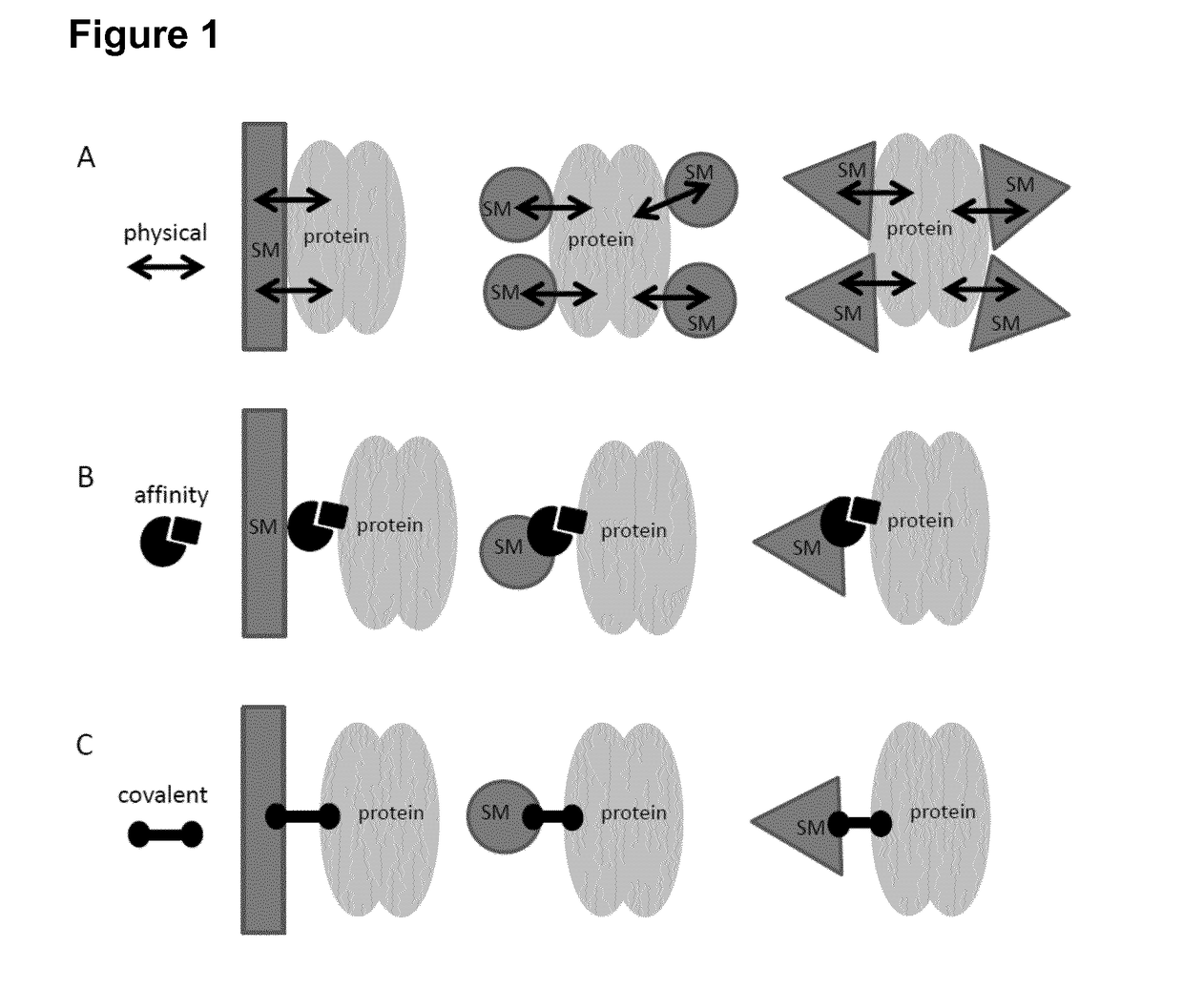Method for in vitro transcription using an immobilized restriction enzyme
a restriction enzyme and in vitro transcription technology, applied in the field of linear template dna in vitro transcription, can solve the problems of dna molecules carrying the risk of integrating into the host genome, particular danger, and serious problems, and achieve the effects of improving linearization of circular dna, reducing the cost of restriction endonucleases, and increasing the availability of enzymes
- Summary
- Abstract
- Description
- Claims
- Application Information
AI Technical Summary
Benefits of technology
Problems solved by technology
Method used
Image
Examples
example 1
ation of EcoRI on Thiopropyl Sepharose 6B
[0344]The goal of this proof-of-principle experiment was to obtain stably immobilized and functional restriction endonuclease. Escherichia coli EcoRI mutants were generated, mutant 1 (referred to as “mut1”), mutant 2 (referred to as “mut2”) and mutant 3 (referred to as “mut3”) and characterized for enzymatic activity. As immobilization strategy, immobilization onto Thiopropyl Sepharose 6B solid supports was tested. The reaction conditions, respectively the pH, were chosen such that the formation of disulfide linkages (R—S—S—R) via sulfhydryl groups (—SH) of cysteine residues present on the EcoRI mutant proteins was promoted. The obtained immobilized EcoRI mutants were further characterized and tested for their enzymatic activity, i.e. the ability to cut a suitable substrate. A detailed description of the immobilization procedure and a discussion of the results are provided below.
[0345]1.1. Design of Escherichia coli EcoRI mut1 and mut2 and mu...
example 2
oRI-TS Beads in a Linearization Reactor for Production of in Vitro Transcribed RNA
[0363]The EcoRI-TS beads obtained according to Example 1 were used in a prototype linearization reactor to test the suitability of the EcoRI-TS beads in a reactor setting. Moreover, the generated linear DNA was used as a template for RNA in vitro transcription.
[0364]2.1. Design of the Prototype Linearization Reactor:
[0365]The reactor setup was essentially according to FIG. 10, comprising a syringe pump (14), a feeding module (feed syringe, 12), a packed bed tank reactor comprising the EcoRI-TS beads (10), and a capture module (collector syringe, 13). The reactor was operated with a bed volume of 200 μl and a feed flow of 10 μl / min. In the tested setup (see below), 1 μg of plasmid DNA was digested in a theoretical total incubation time of 20 minutes.
[0366]2.2. Test of EcoRI-TS Beads in a Prototype Linearization Reactor:
[0367]Suspensions of EcoRI-TS variants were transferred to the reactor tube via syrin...
example 3
[0375]EcoRI (C218A 12×G Linked Cys at Position 290) Immobilized on Thiol Sepharose 4B in a Continuous Packed Bed Reactor
[0376]Recombinant EcoRI having a C218A substitution and a cysteine residue linked to the C-terminus via a 12×G linker according to SEQ ID No. 8 was obtained from Genscript, Piscataway, USA. 3 mg of this enzyme were transferred to 10 ml coupling buffer (0.1 M Tris-HCl pH 7.5, 0.5 M NaCl, 1 mM EDTA). EDTA is added to the buffer to remove trace amounts of heavy metal ions, which may catalyze the oxidation of thiols. De-gassing of the buffer was performed to avoid oxidation of free thiol groups. The final concentration of the protein in coupling buffer is 300 μg / ml.
[0377]Coupling of Mutant EcoRI to Thiol Sepharose 4B HiTrap Columns (GE Healthcare)
[0378]Recombinant EcoRI was coupled to HiTrap columns that had been pre-packed with 5 ml bed volumes of activated Thiol Sepharose 4B (agarose-(glutathione-2-pyridyl disulfide); GE Healthcare) corresponding to 5 μmol of activat...
PUM
 Login to View More
Login to View More Abstract
Description
Claims
Application Information
 Login to View More
Login to View More - R&D
- Intellectual Property
- Life Sciences
- Materials
- Tech Scout
- Unparalleled Data Quality
- Higher Quality Content
- 60% Fewer Hallucinations
Browse by: Latest US Patents, China's latest patents, Technical Efficacy Thesaurus, Application Domain, Technology Topic, Popular Technical Reports.
© 2025 PatSnap. All rights reserved.Legal|Privacy policy|Modern Slavery Act Transparency Statement|Sitemap|About US| Contact US: help@patsnap.com



